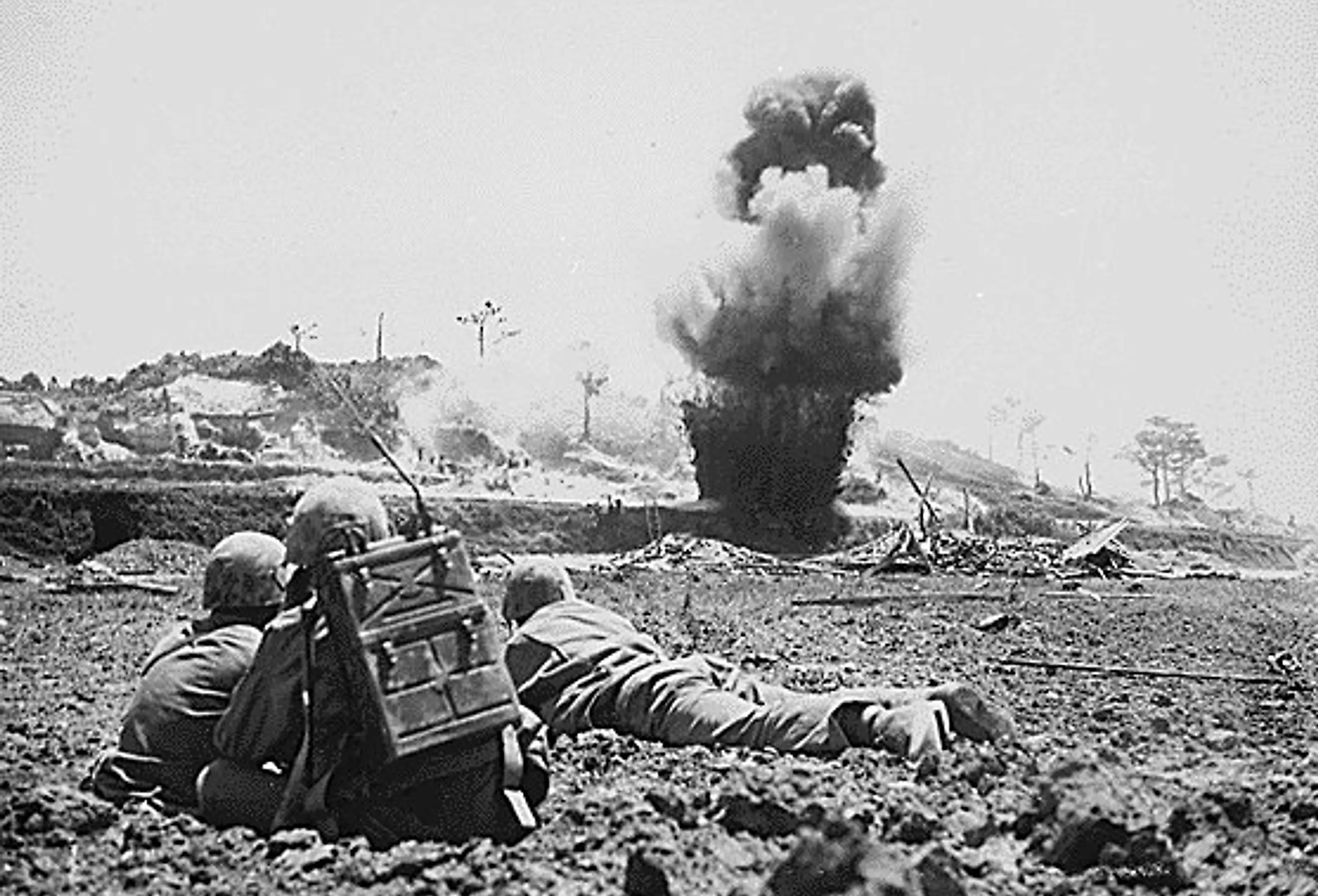
The Deadliest Battles in Human History
Since the dawn of time, armed conflict has been a tragic and devasting fact of human life. Whether over land, resources, or politics, human beings have always managed to find new reasons to wage war against one another. Often as part of larger conflicts or wars, countless individual battles have ensued throughout history. Some are short and relatively uneventful while others changed the fate of entire nations and people. All battles are terrible, but some have managed to stand out in history as a particularly horrendous loss of human life.
Siege Of Leningrad (1941-1944) - Estimated 5.5 Million Casualties

In the middle of summer, 1941, Adolf Hitler and the Nazi war machine launched the largest ground invasion in history into the USSR. Named Operation Barbarossa, the German military caught Soviet forces completely off guard and tore deep into the hinterland. Hundreds of thousands of Soviet soldiers were either killed or captured in the issuing battles. Making a large push to the northeast, the Germans soon found themselves outside the city of Leningrad (St.Petersburg).
Leningrad was quickly cut off from the rest of the outside world and settled in for a long siege. Devastating artillery and air raids turned most of the city buildings into hollow ruins. With little to no food entering Leningrad, much of the civilian population either starved or had to take drastic measures to survive. There are many accounts of survivors eating family pets, and shoe leather, and occasional tales of cannibalism. Many German and Finnish troops attempted to capture the ruined city but each time Soviet forces pushed them back into brutal house-to-house fighting. Lasting a total of 872 days the siege was finally lifted on January 27th, 1944.
Battle Of Stalingrad (1942-1943) - Estimated 2.5 Million Casualties
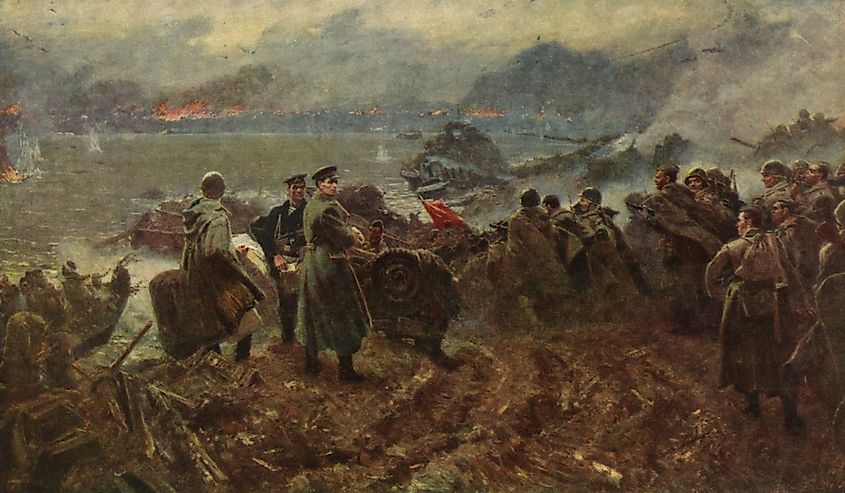
Another clash between the USSR and Nazi Germany, the Battle of Stalingrad served as one of the major turning points in the Second World War. By 1942 the Germans were already running into resource shortages. Low on steel, iron, and especially oil the Nazi high command made the decision to push south in an attempt to capture the resource-rich area of the Caucasus. Standing in the way of that vision was the city of Stalingrad (Volgograd). The initial attacks by the Germans were successful and they soon controlled as much as 90% of the city. However, the Soviets displayed immeasurable courage and bravery and were able to slowly push back the invaders.
Bit by bit, the Soviets gained ground. Engaged in brutal urban combat, the Germans were unable to use their tanks or vehicles effectively. The Soviets purposely hugged the German lines in order to increase the risk of friendly fire from German artillery and aircraft, thus taking them out of the fight entirely. As winter set in and supplies began to dwindle for the Germans, the Soviets were able to launch a daring encirclement codenamed Operation Uranus. The operation was a resounding success and by February 2nd, 1943 the remaining 91,000 Axis forces in the city surrendered.
Siege Of Baghdad (1258) - Estimated 2 Million Casualties
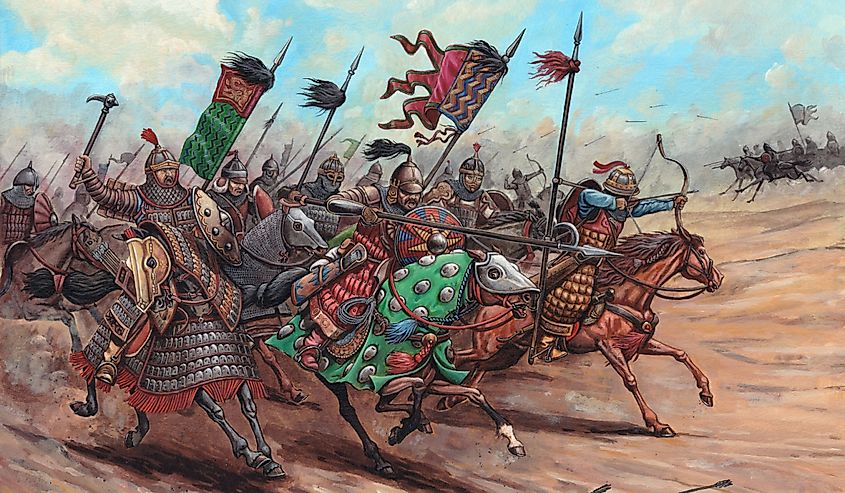
By the middle of the 13th century, the Mongol Empire was well on its way to reaching its apex in power. Despite the somewhat frayed relationships between the descendants of Genghis Khans' sons and grandchildren, the Mongol states remained relatively cohesive and immensely powerful. The Ilkhanate, a Mongol state consisting of much of Central Asia and Persia was beginning to make incursions into the Middle East. Hulagu Khan, the grandson of Genghis Khan, was eager to gain new territory and riches. It was only natural that Iraq, and by extension Baghdad would be the focal point of invasion by the Mongolians. The Mongols first requested the surrender of the city but the ruling Abbassid caliph of the city, Al-Musta'sim, refused and remained confident in Baghdad's defenses.
It only took two weeks before the city fell. Chinese siege engineers brought over from the far reaches of the Mongol Empire made short work of Baghdad's walls. The Mongol army numbering nearly 250,000 stormed into the city. They slaughtered the civilian population and burned down many iconic libraries and colleges. The destruction of Baghdad and the massacre of its population was so devasting and so thorough that many historians believe that it brought an end to the Islamic Golden Age and irreparably damaged the once-great city.
Battle Of Berlin (1945) - 1,286,367 Casualties
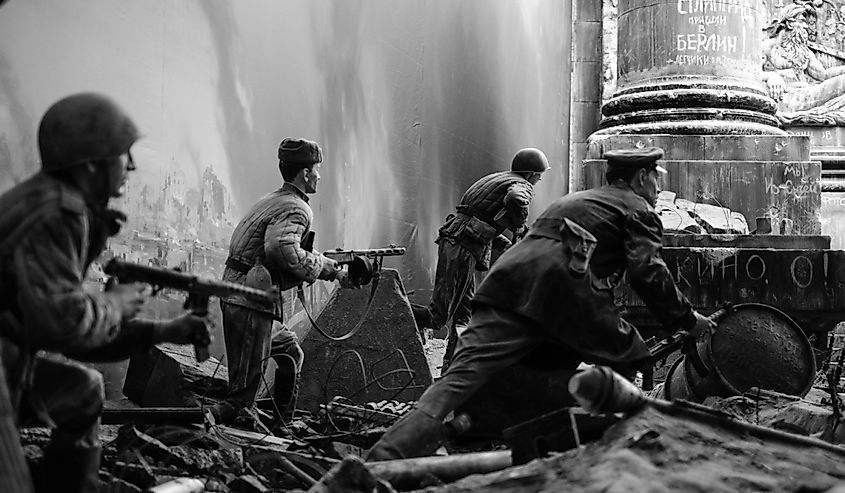
Marking the last stand of Adolf Hitler and the Third Reich, the Battle of Berlin concluded the fighting with the European front of WWII. By April to May 1945, only the most fanatical and devoted National Socialists remained. Much of the standing German army had either been killed in action, captured in battle, or were in the process of surrendering to Allied forces in the West.
Civilian militias, zealous SS divisions, and Hitler Youth members conscripted to fight made up a significant portion of the city's defenders. This ragtag group was up against millions of battle-hardened and bitter Soviet soldiers who had just endured unimaginable savagery at the hand of the German military for the last four years.
Despite being severely outmatched and outgunned, the Germans managed to put up a valiant effort against the Soviet onslaught. However, the fall of the city was inevitable. Once the city landed under Soviet control they were quick to commit atrocities of their own with countless instances of mass execution and rapes of civilians reported in the following months.
Siege Of Gurganj (1221) - Estimated 1.2 Million Casualties

The Siege of Gurganj was the final killing blow of the Khwarazmian Empire at the hands of Genghis Khan and the Mongol horde. The conflict first began after Shah Muhammad II, the leader of the Khwarazamians, killed a group of Mongol diplomats. Enraged by this news, Genghis Khan launched a merciless and devasting invasion into what today could be roughly described as modern-day Iran, Afghanistan, and Turkmenistan. The key cities of Samarkand and Bukhara both fell in short order. Only Gurganj, the capital remained.
Gurganj held out for a short time but was quickly taken after a breach in the city walls thanks to damage from siege engines brought from China. Once the Mongols poured into the city the entire civilian population was either killed in enslaved.
Battle Of Kiev (1941) - 761,783 Casualties
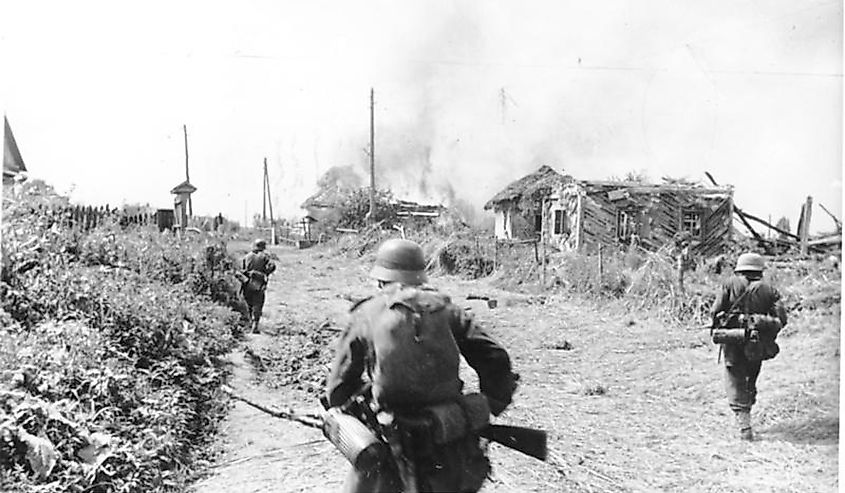
In the early months of the Nazi invasion of the USSR, German forces appeared to be near unstoppable. Ripping through hastily made Soviet defensive lines, the Germans utilized their infamous Blitzkrieg tactics to best effect on the flat steppes of Ukraine.
The Battle of Kiev did not last long but it was devastating. The invading German forces outmaneuvered the Soviet forces easily and achieved the largest encirclement in military history. The Soviets lost nearly 600,000 troops in a matter of weeks. Similar events of encirclement and mass casualties were a common occurrence for the Soviets until they were able to gain momentum and turn the tide of the war at the Battle of Stalingrad.
Battle Of Manila (1945) - Estimated 500,00 Casualties
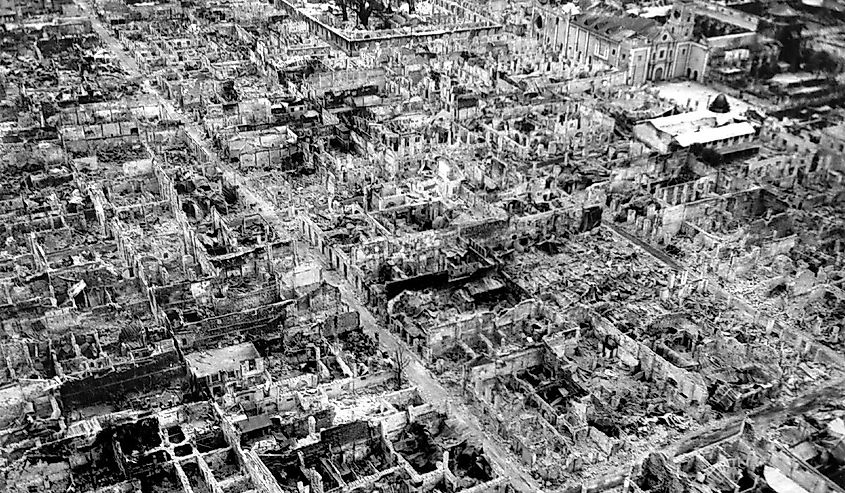
Fought between the US Army and the Japanese Empire, the Battle of Manila was the largest instance of urban warfare in the entire Pacific theatre for WWII. The close-quarters combat that took place in the city ruins was nothing short of animalistic. The Japanese defenders were beyond radical and would often fight to the death rather than retreat or surrender to American forces.
While casualties were high for both armies, the Filipino civilians caught in the crossfire paid a much higher toll. There were many instances of sporadic killings of Filipino civilians at the hand of frustrated and angered Japanese soldiers who sensed an inevitable American victory. Many historians have gone so far as to label the Battle of Manila as the "Stalingrad of the East."
Siege Of Changchun (1948) - 425,000 Casualties
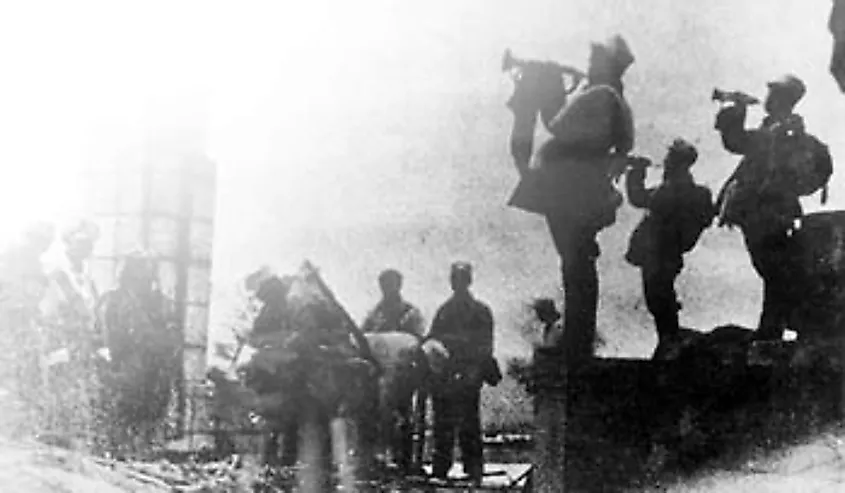
One of the largest battles of the Chinese Civil War, the Battle of Changchun would result in a pivotal yet costly victory for the Chinese Communist Party. The assault on Changchun was the first stage of an ambitious campaign against the Kuomintang (KMT). The communist attack caught the KMT forces that held the city off guard. The defenders had little time to prepare and quickly found themselves encircled and cut off from food, supplies, and reinforcements.
Many of the casualties were a result of the mass starvation of the civilian population. The fighting between the two forces also took its toll on both sides. However, with no hope of supplies reaching the city's defenders and all avenues of escape blocked by Communist forces, the KMT laid down their weapons and surrendered only after a few months of fighting.
Siege Of Budapest (1944-1945) - 422,000 Casualties
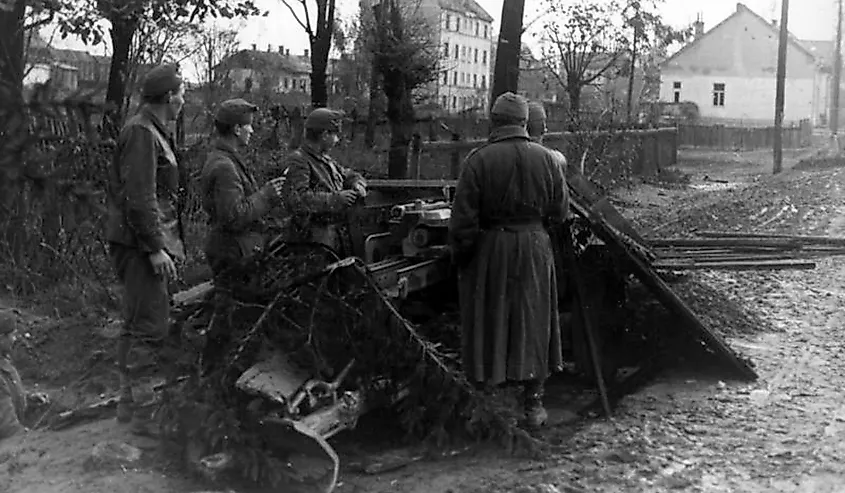
As the tide turned on the Eastern Front, the Soviets began to advance into Eastern and Central Europe by 1944. Hungary, a staunch ally of Germany and co-belligerent in the 1941 invasion of the USSR soon found itself in the crosshairs of the Soviet military. The Hungarian and German defenders had anticipated an attack was coming and had set up a series of impressive defensive fortifications throughout the Hungarian capital of Budapest.
The fighting between the Soviets and Axis forces was fierce and claimed the lives of many on both sides. As supplies dwindled and the weather turned cold, starvation began to set in and took the lives of roughly 300,000 civilians. Impromptu executions of local Jews were also organized at the hands of the Hungarian Arrow Cross Party. In early 1945 the defenses at Budapest were overcome by the Soviets and Hungary was officially knocked out of the war.
Battle Of Shanghai (1937) - 400,000 Casualties
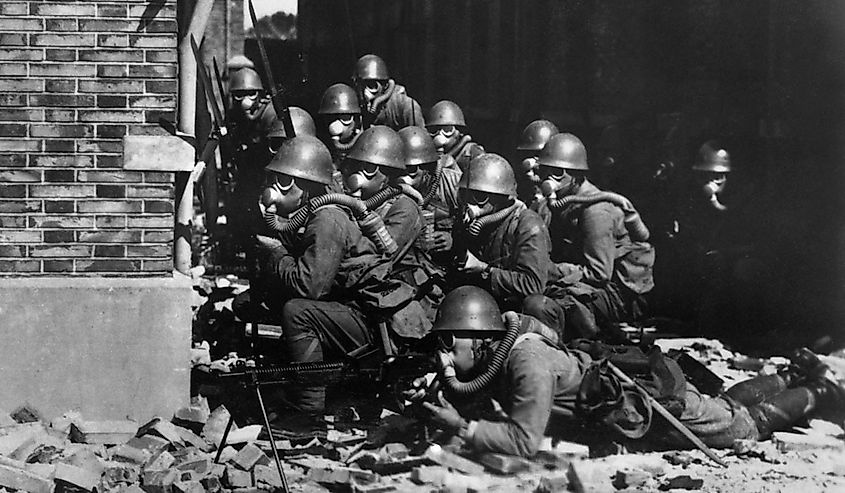
One of the many deadly battles of the Sino-Japanese War, the Battle of Shanghai was the first major victory of the Japanese invasion of the Chinese mainland. The Chinese forces were much less experienced than their Japanese counterparts and also lacked the equipment and proper supplies.
The Chinese plan was to stall the Japanese long enough to mount a counterattack from elsewhere but these aspirations fell short. Fierce fighting lasted in the city for nearly three months before the Chinese forces had no choice but to withdraw. Of the 750,000 Chinese troops that took part in the battle, nearly 250,000 of them died. The bulk of Chinese casualties were their elite German-trained units, which would have been invaluable in the battles to come.
Siege Of Paris (1870-1871) - 332,142 Casualties
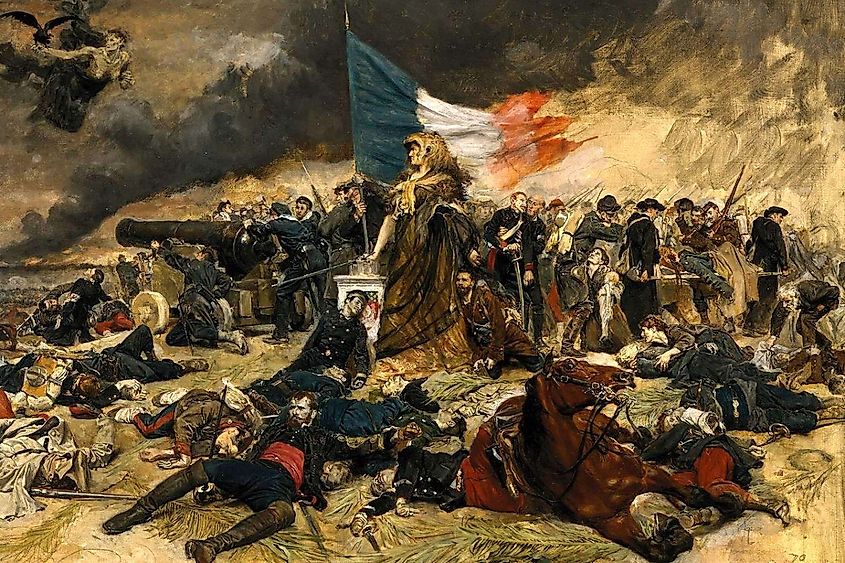
In 1870 the French and soon-to-be German Empire went to war over which nation would dominate Continental Europe. The Prussian-led army made short work of the slow-moving and poorly organized French army at the Battle of Sedan. After this crushing defeat, the German coalition marched into Paris. Despite the military debacle the French had just suffered, Paris was a well-defended city. Dozens of fortresses and walls were set up around the outskirts of Paris to defend against such an attack. The Germans knew that a frontal assault would be hopeless so instead surrounded the city with the goal of starving the Parisians.
The Germans shelled Paris on a daily basis. These attacks killed a remarkably few people but the devastation to city infrastructure and morale was insurmountable. The French sued for peace only a few months later.
Battle Of Okinawa (1945) - 241,593 Casualties
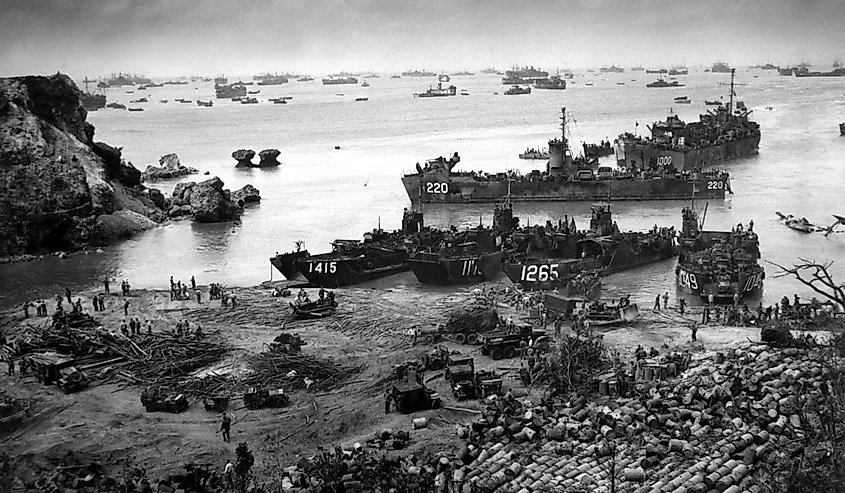
One of the last major battles fought between American and Japanese ground forces in the Second World War also turned out to be one of the most desperate and savage. The island of Okinawa was the last obstacle standing between an Allied invasion of the Japanese mainland. This sobering realization led Japanese forces to engage in an even more stubborn and ferocious form of warfare. An intricate cave and trench network built by the Japanese months beforehand proved to be an effective tool against American advances.
After months of bitter fighting, the remaining Japanese forces were either killed, surrendered, or committed suicide. Nearly 100,000 of the 130,000 Japanese soldiers died in the fighting. An additional 100,000 civilians were either killed in the fighting or forced to commit suicide by Japanese soldiers.
Fall Of Tenochtitlan (1521) - Estimated 240,000 Casualties
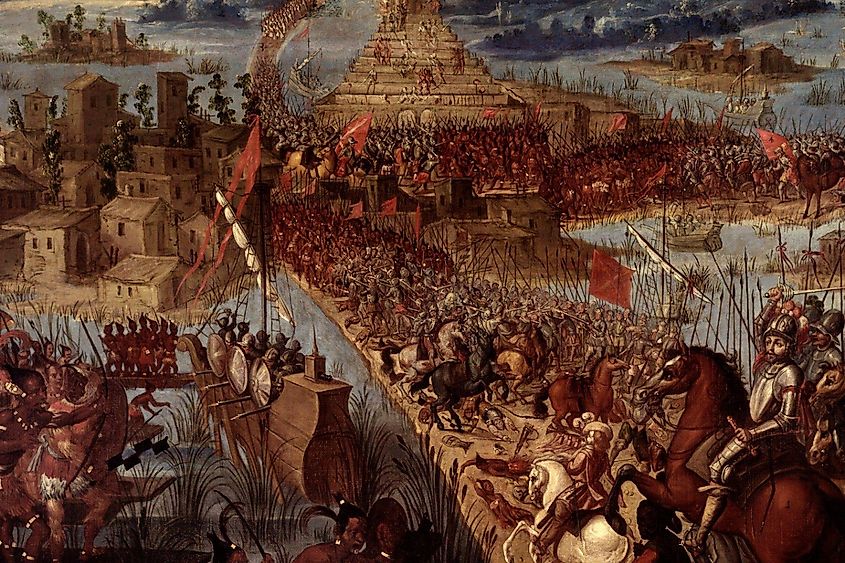
Only a few decades after the discovery of the New World by Christopher Columbus in 1492, a Spanish and Indigenous coalition led by the infamous conquistador Hernán Cortés were at the gates of the Aztec capital in modern-day Mexico. Tenochtitlan was in the middle of a massive lake, with only a handful of bridges offering access to the city. This made an assault nearly impossible. However, the Spanish had an unknown weapon on their side, smallpox.
This virus had unknowingly spread to the Aztec defender thanks to previous encounters with the Spaniards. The Spanish had built an immunity to this deadly disease however, the Aztecs were not so lucky. The devastation caused by smallpox along with the superior weaponry of the Spanish led to a quick and decisive victory for the invaders. The city was then looted by the Spanish looking for gold to bring back to Europe and the Indigenous tribes, aligned with the Spanish, killed much of the Aztec population. These tribes were seeking revenge after centuries of subjugation at the hands of their former Aztec oppressors.
Second Siege Of Sevastopol (1941-1942) - 236,437 Casualties
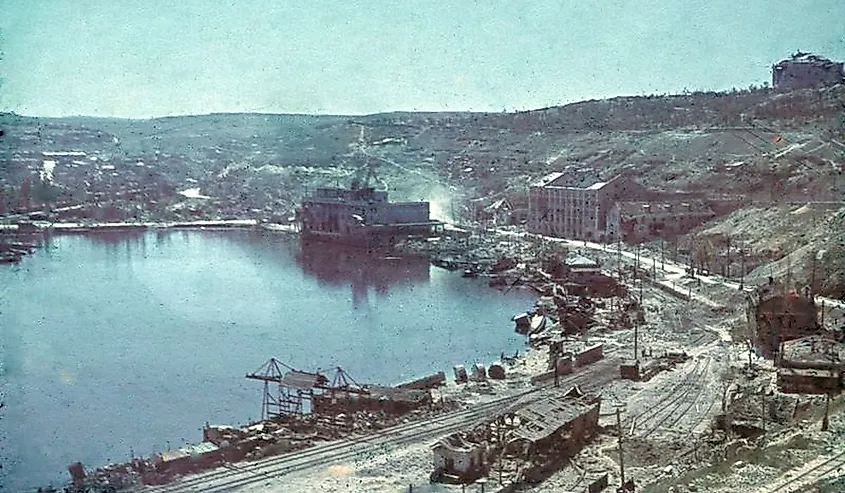
Another battle that took place during Operation Barbarossa, the Siege of Sevastopol, resulted in an impactful German victory that gave them control over much of Ukraine and the Black Sea. Located in Crimea, Sevastopol was of great critical importance to both the Soviets and Germans.
Lasting from October 1941 until July 1942, the Battle for Sevastopol is often overlooked by large conflicts at Stalingrad, Kursk, and Leningrad. However, Sevastopol was host to one of the largest and best-defended naval bases in the entire USSR. Despite being a German victory, the staunch defense of the city and naval base halted the Germans long enough for the already beleaguered Soviet military to catch its breath and launch counterattacks of its own in later months.
First Siege Of Sevastopol (1854-1855) - 230,000 Casualties
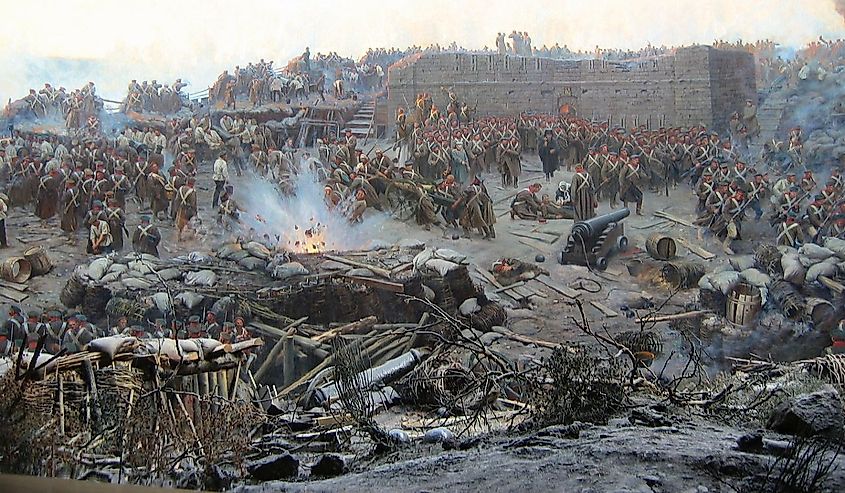
1941 was not the first time that the city of Sevastopol was in the sights of foreign powers. One of the major battles of the Crimean War, the Siege of Sevastopol saw roughly 50,000 British and French troops launch an assault against the Russian-held fortress in Sevastopol.
The battle resulted in a British and French victory over the Russians but it was costly for both sides. Dysentery had made its way through the camps of either side and ended up claiming more lives than actual combat. The fort was finally taken after enough heavy artillery pieces were able to be shipped over from Britain and France. The Russians retreated from the city and sued for peace shortly after.
Battle Of The Bulge (1944-1945) - Estimated 218,900 Casualties
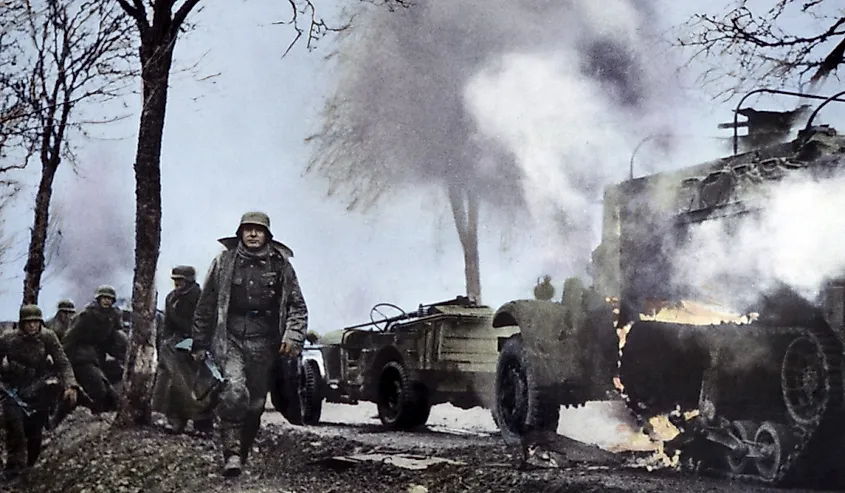
Beginning in the winter months of 1944, Hitler launched his last offensive in the Second World War against the advancing Allied forces situated on the Western Front. This offensive lasted nearly six weeks and resulted in some of the most intense fights in that theatre of the war. Surging through the Ardennes forest in Belgium, the typical Blitzkrieg tactics were once again utilized with astounding effectiveness. Giving the Allies flashbacks of 1940 many units in the area were either overrun or surrounded.
However, this daring attack would not be a repeat of 1940. The German military was conically low on both supplies and manpower and ran out of steam. The Allies were also fast to react and managed to regain any lost territory with relative ease. It was clear to everyone that the end was near for Nazi Germany.
Battle Of Alesia (52 BC) - Estimated 200,000 Casualties
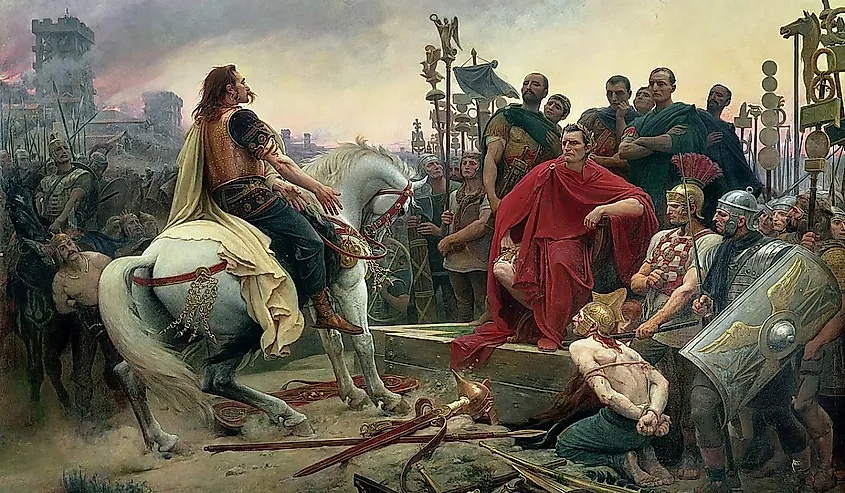
The deciding battle of Julius Caesar's conquest of Gaul (France), the Battle of Alesia was not only bloody but also one of the best displays of military genius in history. Julius Caesar had been tracking down the formidable and resourceful Gaulic chieftain Vercingetorix for months, finally pinning him down to the hilltop city of Alesia.
Surrounded on all sides, Vercingetorix was able to send a messenger to call for aid from other Gaulic tribes who were still hostile to the Roman presence in their homeland. As the siege dragged on for months, the surrounding Gaulic tribes were able to muster an army of nearly 250,000 men. Learning of this enormous relief force, Caesar ordered the construction of a second wall around his own men and Alesia to better protect them from this new threat.
When the relief force arrived, the Gauls inside of Alesia rallied out and attacked in unison with the reinforcements. Assaulted on both sides the Romans were pushed to the brink on multiple occasions but were able to beat back both forces due to their superior discipline and equipment. If not for the leadership of Caesar the Romans would have surely been destroyed. This battle resulted in the total occupation of Gual and it was soon incorporated into the Roman Empire.
Battle Of Xinkou (1937) - Estimated 200,000 Casualties
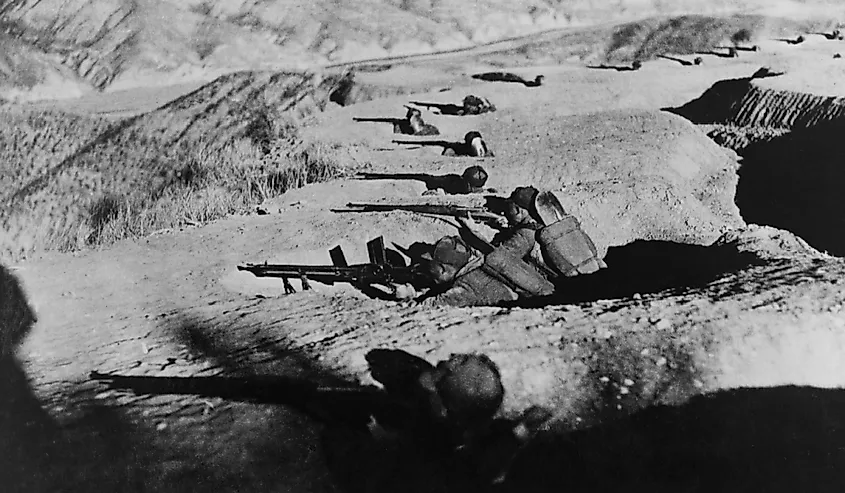
In October 1937, the Battle of Xinkou began between the Chinese National Revolutionary Army and the Imperial Japanese Army in Northern China, during the Second Sino-Japanese War. The battle lasted for 24 days and ended with a victory for the Japanese. The Battle of Xinkou was one of the few battles in which the Chinese were able to put up a strong resistance against the well-trained and experienced Japanese army. The Chinese had been greatly outnumbered by the Japanese, but they still managed to inflict heavy casualties.
This battle granted a small morale boost to Chinese troops, who had been facing a string of defeats in recent months. Despite their hardnose defense at Xinkou, the Chinese National Revolutionary Army continued to struggle against the Japanese for the remainder of the war. Fighting continued until 1945 after Japan surrendered to the Allies.
Warsaw Uprising (1944) - Estimated 200,000+ Casualties
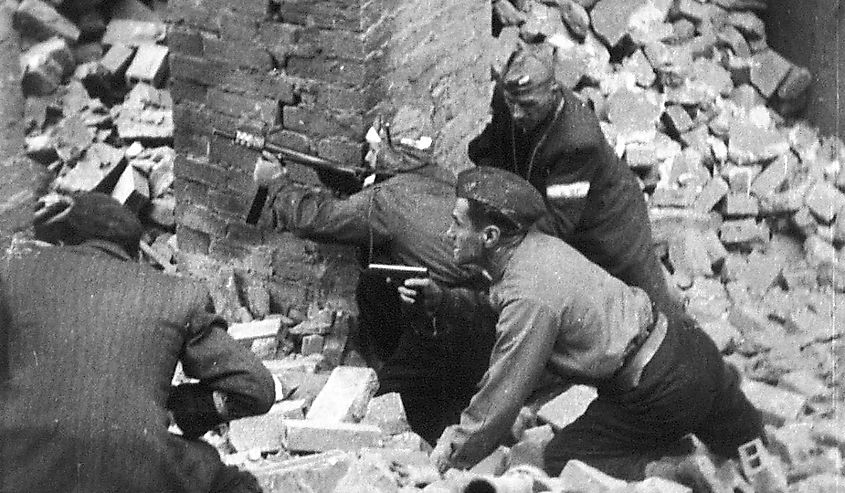
One of the most tragic and saddening battles on this list, the Warsaw Uprising, was a failed operation made by Polish partisans to expel the German occupation from their city. The uprising was an attempt to try and install the previous Polish government that was in exile in Britain. As Soviet forces approached the city in 1944, Soviet commanders promised aid to the Poles in their uprising however, it was never granted. The revolt began with limited success in various pockets of the city. After the initial chaos dissipated, the German garrison was able to coordinate and brutally crush the rebels.
Mass executions and other barbaric crimes were carried out in acts of retribution against the Polish population regardless of their involvement. Instead of aiding the Poles, the Soviets remained idle outside of the city limits and allowed the slaughter of what remained of the Polish resistance. The Soviets captured the remains of Warsaw only a few weeks later. This travesty guaranteed that a free Poland did not exist after the war and rather it became a Soviet satellite state ruled over by a Communist regime.
Siege Of Constantinople (717-718 AD) - Estimated 170,000 Casualties
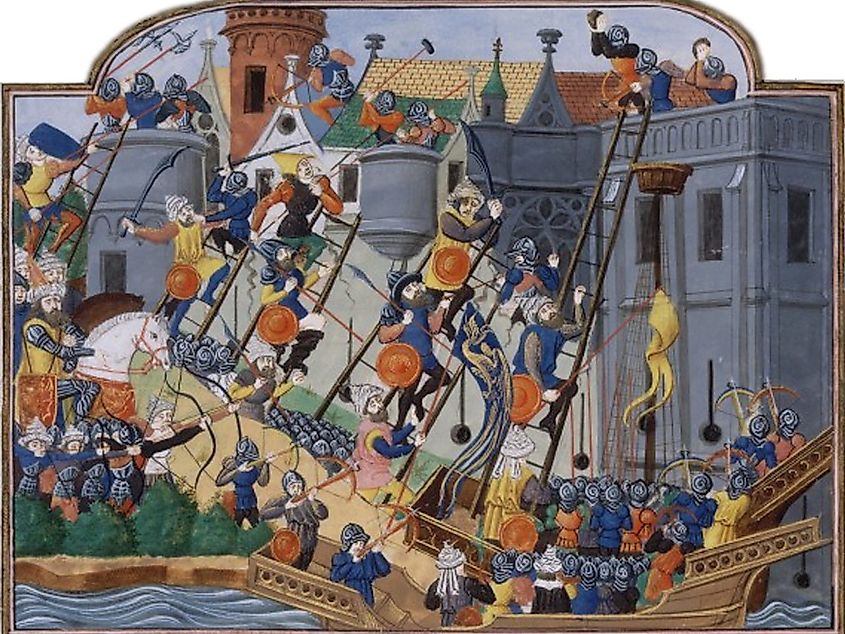
The dramatic conclusion of one of the many Byzantine-Arab Wars, the Siege of Constantinople solidified a Byzantine and Christian presence in Anatolia and the Balkans for the next few centuries. The Arab conquests of the 7th and 8th centuries resulted in the loss of much of Byzantine's Middle Eastern territory. From this weakened position, the Byzantines soon found themselves at the receiving end of endless raids and incursions. However, the Byzantine-Arab War was much more than a series of sackings of towns or cities but rather a fight for the existence of a Byzantine state.
Constantinople was one of the most well-defended cities in the world. This is a title that was rightfully held until the invention of gunpowder and cannons. With one side of the city guarded by a triple layer of hardy brick walls and the other by the sea any kind of assault against the city was almost impossible.
Knowing this, the Arab commanders encircled both sides of the city with the intention of starving the population into submission. However, as the Arab fleet attempted to block the shipping lanes into the city they caught a bad wind and began to crash into one another. The defenders pounced on this opportunity and unleashed a Medieval superweapon against them. Byzantine ships outfitted with siphons on their deck shot Greek fire, a napalm-like substance into the Arab navy. Dozens of Arab ships and countless sailors were incinerated in an instant. Two more Arab supply fleets would meet the same fate. The main invasion force on land was soon crushed by a Bulgarian army coming to the aid of their Byzantine allies. Byzantine chroniclers claim that they killed every last man in the Arab army.
Each of these battles offers a short glimpse into the often bleak history of humanity. War is something that transcends borders and cultures and is a sad shared experience of just about every nation and people on Earth.
Deadliest Battles in Human History
| Battle | Date | Estimated Casualties |
|---|---|---|
| Siege of Leningrad | 1941–1944 | 5,500,000 |
| Battle of Stalingrad | 1942–1943 | 2,500,620 |
| Siege of Baghdad | 1258 | 2,000,000 |
| Battle of Berlin | 1945 | 1,286,367 |
| Siege of Gurganj | 1221 | 1,200,000 |
| Battle of Kiev | 1941 | 761,783 |
| Battle of Manila | 1945 | 500,000 |
| Siege of Changchun | 1948 | 425,000 |
| Siege of Budapest | 1944–1945 | 422,000 |
| Battle of Shanghai | 1937 | 400,000 |
| Siege of Paris | 1871 | 332,142 |
| Battle of Okinawa | 1945 | 241,593 |
| Siege of Tenochtitlan | 1521 | 240,000 |
| Second Siege of Sevastopol | 1941–1942 | 236,437 |
| First Siege of Sevastopol | 1854–1855 | 230,000 |
| Battle of the Bulge | 1944–1945 | 218,900 |
| Siege of Alesia | 52 BC | 200,000 |
| Battle of Xinkou | 1937 | 200,000 |
| Warsaw Uprising | 1944 | 200,000 |
| Siege of Constantinople | 717–718 | 170,000 |
| Siege of Candia | 1648–1669 | 149,739 |
| Siege of Yongzhou | 1076 | 140,000 |
| Siege of Odessa | 1941 | 133,813 |
| Battle of Taiyuan | 1937 | 130,000 |
| Battle of South Shanxi | 1941 | 120,000+ |
| Battle of West Hubei | 1943 | 115,830 |
| Siege of Ostend | 1601–1604 | 115,000 |
| Third Battle of Nanking | 1864 | 100,000 |
| Siege of Port Arthur | 1904–1905 | 100,000 |
| Battle of Changde | 1943 | 100,000 |
| Siege of Adrianople | 1912–1913 | 93,282 |
| Battle of Dunkirk | 1940 | 88,000 |
| Siege of Basra | 1987 | 85,000 |
| Third Battle of Changsha | 1942 | 84,862 |
| First Battle of Changsha | 1939 | 80,000+ |
| Battle of Nanchang | 1939 | 75,328 |
| Siege of Plevna | 1877 | 75,000 |
| Siege of Petersburg | 1864–1865 | 70,000 |
| Second Siege of Zaragoza | 1808–1809 | 64,000 |
| Siege of Rhodes | 1522 | 55,200 |
| Battle of Gettysburg | 1863 | 50,000 |
| Siege of Chittorgarh | 1567–1568 | 40,000 |











